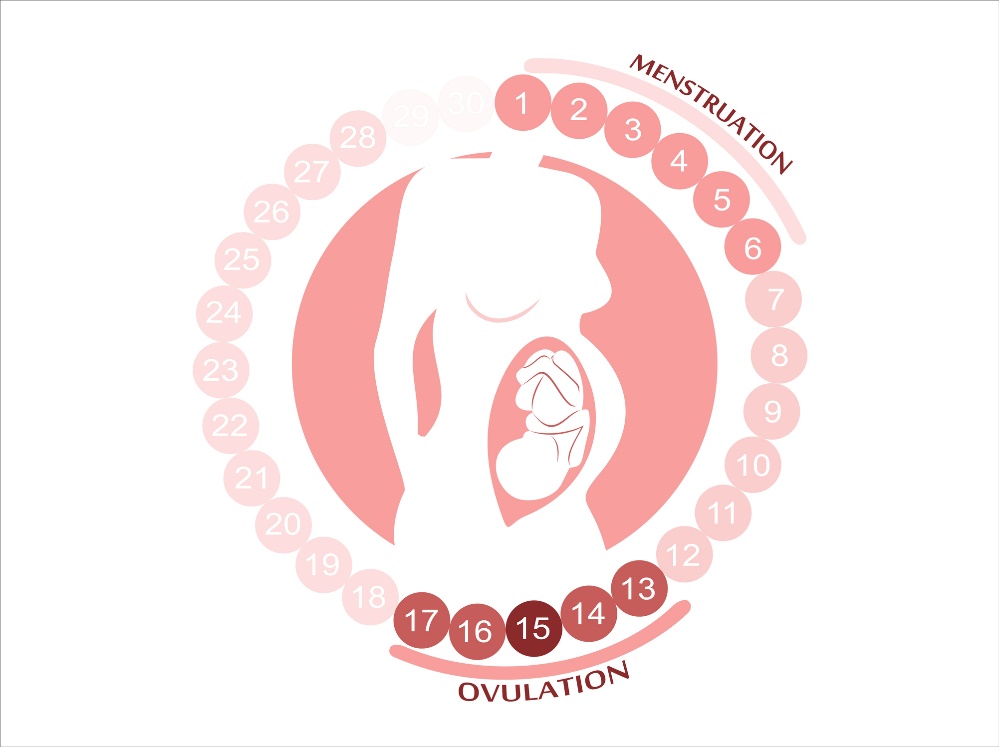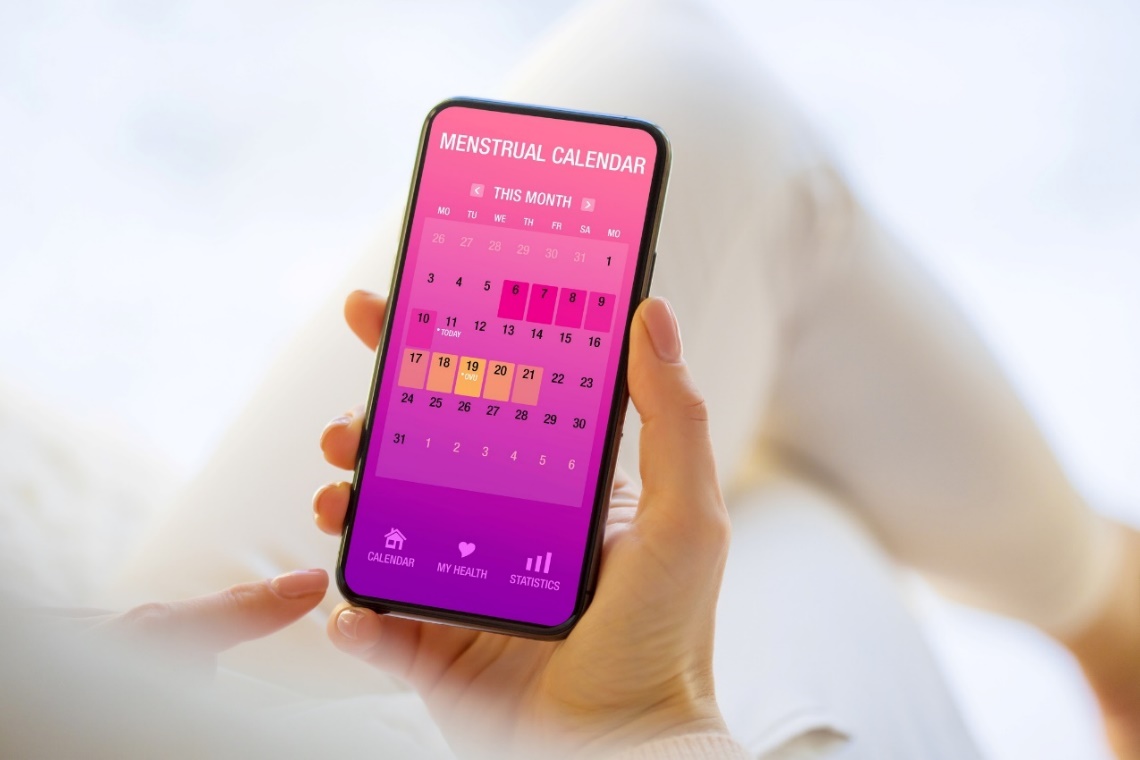- ROZTOČIL, Aleš and Pavel BARTOŠ. Modern Gynaecology. Prague: Grada, 2011. ISBN 978-80-247-2832-2.
- ČEPICKÝ, Pavel. Gynecological minimum for practice. Prague: Grada Publishing, 2021. ISBN 978-80-271-3027-6.
- Healthline.com - What Is Ovulation? What to Know About Your Menstrual Cycle. Ashley Marcin
- ncbi.nlm.nih.gov - Ovulation, a sign of health. Pilar Vigil, Carolina Lyon, Betsi Flores, Hernán Rioseco and Felipe Serrano
Or: How do I know I'm ovulating?

Ovulation is part of a woman's healthy menstrual cycle. It occurs around the middle of the cycle and is the most opportune time for a woman to conceive a child. What does ovulation involve and what are the possible symptoms?
Article content
Ovulation in a nutshell
Ovulation occurs around the middle of a woman's cycle, or on day 14 if the cycle is classically counted as 28 days. Ovulation is the culmination of the follicular phase of the menstrual cycle.
It is the most fertile day in a woman's entire menstrual cycle.
At the beginning of the follicular phase, hormone levels are low, but as the days pass and ovulation approaches, the levels of FSH (follicle-stimulating hormone) and LH (luteinizing hormone) increase. The level of the hormone estrogen increases significantly.
In this phase, the egg follicle matures in the woman's ovary. At the end of the follicular phase, ovulation occurs. After ovulation, the cycle transitions smoothly into the lethal (luteinizing) phase of the female cycle.
With the arrival of ovulation, the cervical mucus thins and becomes more accessible to male sex cells - sperm. At the same time, the uterine mucosa thickens to facilitate the potential nesting of the fertilized egg.
Once the egg in the follicle is mature, the female body releases the luteinizing hormone LH. This then triggers the release of the egg from the follicle.
At ovulation, the egg is released from the follicle from the ovary and travels through the fallopian tube towards the uterus.
The lifespan or fertility of the egg is approximately 12-24 hours.
At the time of ovulation and fertile days, a woman's libido is at its physiological peak. Female sex hormones are at their highest level. There is an increase in energy, sex drive, self-esteem and improved mood.
The woman usually feels more attractive and confident.
The female body secretes a greater amount of pheromones that are intensely felt by the opposite male sex.
Fertile window (fertile days)
The approximately 6 days around the day of ovulation is called the fertile window or fertile days. This is a short period of time when sexual intercourse can most likely lead to a woman becoming pregnant.
Although the lifespan of an egg is short, male sperm can survive in the fallopian tubes for about 3 to 5 days after intercourse. They are ready to fertilize the egg as soon as it is released from the ovary.
Sperm can survive in the fallopian tubes for 3 to 5 days.
The length of the fertile window is determined by the total sum of the life span of the female egg and the life span of the male sperm.

Calculation of fertile days and ovulation
If a woman has a 28-day menstrual cycle, ovulation (the release of an egg from the ovary) occurs in the middle of the cycle. This is the 14th day from the start of menstrual bleeding.
The fertile window is approximately 6 days around the day of ovulation (including the day of ovulation).
However, ovulation may not occur mathematically on that exact day, so it is advisable to monitor for specific physical signs. These include, for example, increased production of clear mucus in the vagina or increased basal body temperature.
In addition to the traditional calendar, it is advisable to use a modern mobile app in the form of a menstrual calendar to calculate this. Based on the criteria set and the length of the cycle, the app will calculate the woman's expected menstruation, ovulation and fertile days.

Signs and symptoms of ovulation
As a result of the change and increase in sex hormones, specific physical and psychological manifestations can physiologically occur.
Ovulation causes increased production of vaginal mucus. This discharge tends to be transparent, watery, but may also be slightly cloudy. After ovulation is over, the mucoid discharge tends to thicken.
The most common symptom of ovulation is increased breast tenderness and mild lower abdominal pain.
Faint, brief bleeding, called spotting, is also considered a physiological sign of ovulation.
Just after ovulation ends, the level of estrogen drops sharply and the female hormone progesterone rises.
As a result of the imbalance of hormones released into the bloodstream, light bleeding can occur even in the middle of the cycle. In some women, this drop in estrogen can lead to light bleeding, known as spotting.
In terms of psychological manifestations, there may be an increase in sexual desire, feelings of energy and an improvement in mood and self-esteem.
Possible signs and symptoms of ovulation:
- Increased breast tenderness
- Slight pain in the lower abdomen
- Transparent vaginal discharge
- Increased sexual desire and libido
- Light bleeding - "spotting"
- Increased sensitivity to odors
- Increased energy and performance
- Increased basal body temperature
Ovulation and pregnancy monitoring
When trying to conceive a child, in addition to mathematical calculations of fertile days, a woman may also be guided by specific physical symptoms of a woman.
Monitoring mucus
The consistency of the mucus-like discharge from the vagina may resemble raw egg white in colour. At the time of ovulation, it is usually transparent, watery and stretchy. At the time of peak fertility, the mucus can be continuously stretched between two fingers of the hand.
Basal temperature measurement
Measurement of basal temperature in the vagina, rectum or oral cavity is also used to determine ovulation.
The basal temperature rises by about half a degree during ovulation.
The ideal basal conditions for taking the temperature are considered to be 12 hours after eating, after a restful sleep, without physical activity and emotional fluctuations. It is therefore recommended to take the temperature in the morning after waking up, ideally always at the same time.
It is recommended to use a special digital basal thermometer that measures temperature to 2 decimal places.
Home ovulation tests
Ovulation tests are similar to pregnancy tests because the data is obtained from a urine sample. At the time when ovulation is about to occur, the luteinizing hormone LH increases in a woman's body.
Therefore, if the ovulation test shows a positive LH value, ovulation will occur within the next 12 to 36 hours. If the test is positive, it is advisable to schedule intercourse for the evening of the day of testing or the following morning.
Irregular and delayed ovulation
Not all women need to ovulate regularly every month. In some cases, ovulation may be delayed or even not occur at all.
This can be caused by a gynaecological disorder such as PCOS (polycystic ovary syndrome), amenorrhea and others. However, sometimes excessive stress, dieting or rapid weight changes (both drop and gain) can be the cause.
Possible reason for delay/absence of ovulation:
- Excessive stress
- Increased age
- Rapid weight fluctuation
- Recent discontinuation of hormonal contraceptives
- Hormonal imbalance
- Amenorrhea
- Obesity
- Gynaecological surgery
- Thyroid disorder
- Polycystic ovary syndrome PCOS
If a woman notices special accompanying symptoms of ovulation, its delay or omission, it is always necessary to contact her doctor, gynaecologist
Interesting resources










